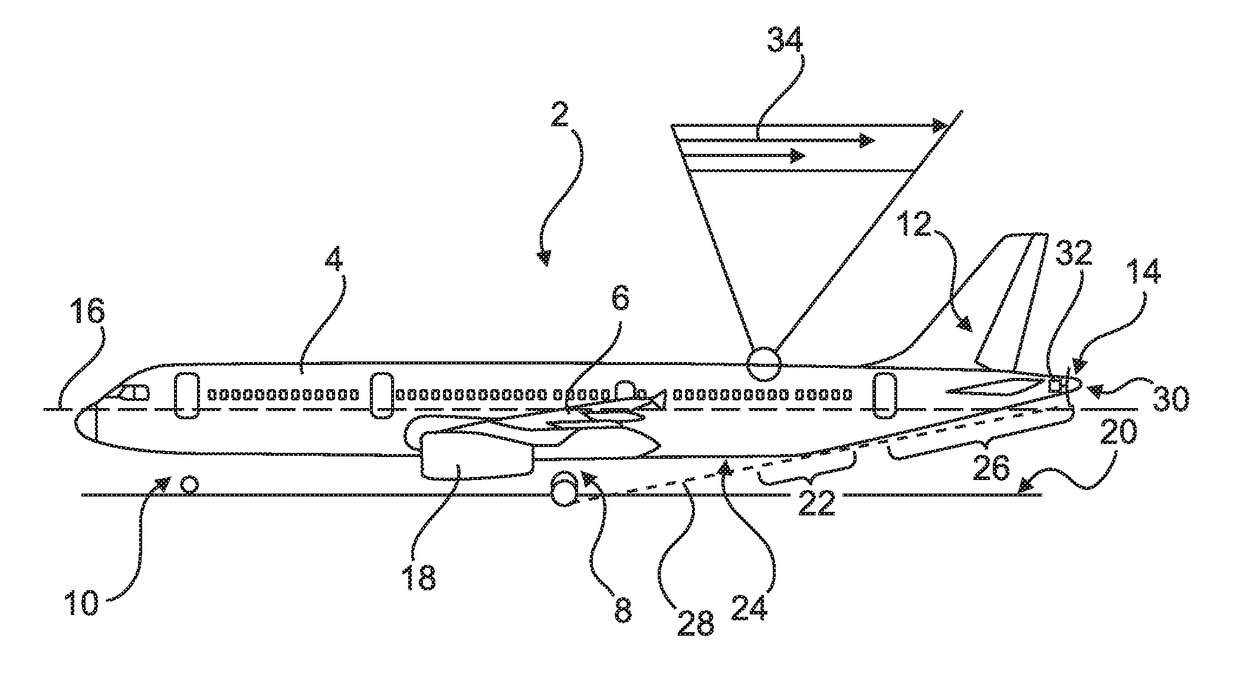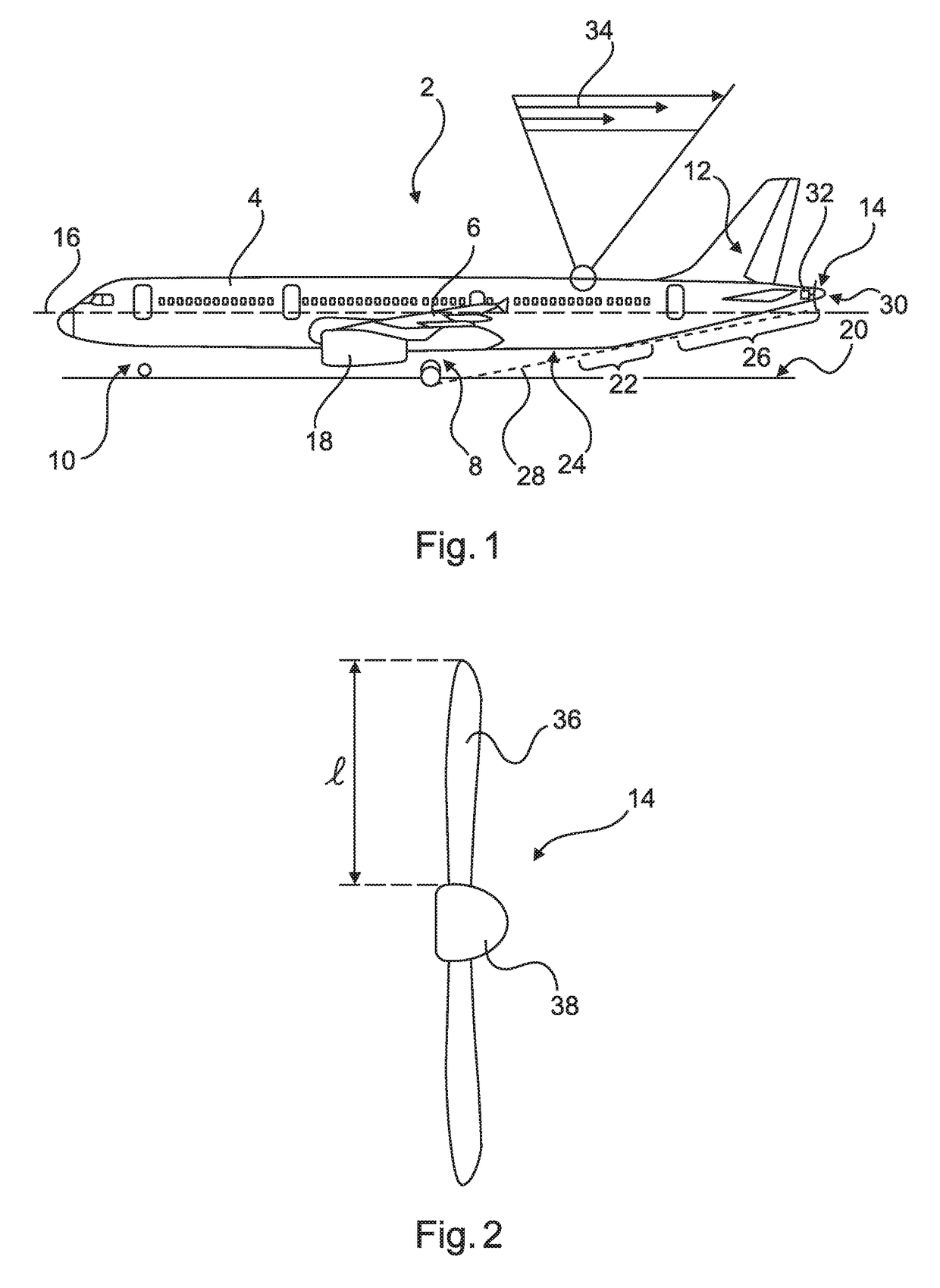Aircraft having a drag compensation device based on a boundary layer ingesting fan
a technology of drag compensation and ingesting fan, which is applied in the direction of propellers, airflow influencers, power plant types, etc., can solve the problems of manufacturing and certifying aircraft, and achieve the effect of reducing the clearance of the tail and increasing the cost of designing
- Summary
- Abstract
- Description
- Claims
- Application Information
AI Technical Summary
Benefits of technology
Problems solved by technology
Method used
Image
Examples
Embodiment Construction
[0030]FIG. 1 shows an aircraft 2 having a fuselage 4, a wing 6, a main landing gear 8, a nose landing gear 10, a tail section 12 and a rear fan 14. The fuselage 4 may consist of one or more central portions having constant cross sections as well as a tapered section at a nose and a tail. The fuselage 4 may be designed as a cylindrical (tubular) fuselage with a main or longitudinal extension axis 16.
[0031]The term “cylindrical” does not necessarily require a circular cross-section, but merely expresses an elongate shape along the longitudinal axis 16 with a cross section that remains unchanged along a major section of the fuselage 4. Commercial aircraft are known having a circular cross-section, while others may tend to be more oval, i.e. having a slightly unequal relationship between height and width of the fuselage. Other commercial aircraft are known having a clearly oval cross-section at least in a certain region. These are not ruled out by the term “cylindrical”.
[0032]The wing 6...
PUM
 Login to View More
Login to View More Abstract
Description
Claims
Application Information
 Login to View More
Login to View More - R&D
- Intellectual Property
- Life Sciences
- Materials
- Tech Scout
- Unparalleled Data Quality
- Higher Quality Content
- 60% Fewer Hallucinations
Browse by: Latest US Patents, China's latest patents, Technical Efficacy Thesaurus, Application Domain, Technology Topic, Popular Technical Reports.
© 2025 PatSnap. All rights reserved.Legal|Privacy policy|Modern Slavery Act Transparency Statement|Sitemap|About US| Contact US: help@patsnap.com



